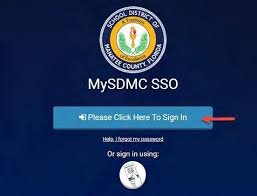How to Ask for a Budget – And Get an Answer
The intricate budget dance between purchaser and vendor goes ‘round and ‘round, with a fine line between “driving a hard bargain” and “giving your services away for free”. Thankfully, there are creative ways to open up a more effective dialog in which everyone feels valued and respected, striking the delicate pricing balance between purchaser needs and vendor deliverables.
Look to the Past to Find Your Starting Point
How much does it cost? How much can you spend?
No one ever wants to answer the money question, as it quickly puts one party on the defensive. The purchaser must enforce the allocated budget for their requirements (realistic or not). And the vendor must justify the quoted price of their scope of work (worthwhile or not). Meeting in the middle is difficult, but by understanding how much the purchaser has paid for previous, similar projects, you retain control with a smart starting point for negotiations.
Working from that educated baseline, take time to truly understand your prospect’s current needs and wants. Identify their goals and requirements, and align them with your offerings and end product. Everything your propose (budget and deliverables) must ultimately answer to the client’s expectations, so be sure to accurately identify KPIs before presenting your proposal. Anything less, and you’re sure to run into disappointing outcomes for everyone; that is, if you even make it past the first round of vendor cuts.
Understand your Prospect’s Personal Approval Threshold
Have you ever walked out of a positive pitch meeting with a key stakeholder, feeling confident and secure about the impending win … only to find out later that your contact isn’t authorized to approve the budget amount of your proposed service offering, and their superior will have to “look it over”, and “get back to you”?
The addition of a new budget approval contact adds another layer of volatility to your proposal, and (now that you’ve already presented) you no longer have the opportunity to establish valuable firsthand rapport and trust with that newcomer.
So, how do you combat this?
Do your research ahead of time. Know who you’re meeting with, know where they stand on the decision-making totem pole, and if necessary, invite additional senior stakeholders to your meeting. You’ll be glad to have allies on the inside, from the beginning, who can vouch for your pricing and capabilities, ultimately resulting in more efficient buy-in with fewer potential disruptors.
Budget Percentages
Ask questions related to budget percentages to understand the value your prospect places on different operating categories, specifically your service/product category. Use these percentages to shape your proposal.
For example, effective marketing budgets will vary between 1% and 30% of sales revenue, and are dependent on establishing (or maintaining) brand awareness for a new (or existing) product or service. Once you know this number, you can target your deliverables accordingly.
By acknowledging the value your prospect assigns to certain operating activities – from their perspective – you arm yourself with crucial insight into delivering an actionable strategy that solves their problems with your unique solutions — within the budget they’ve allotted.
Risk v. Reward Analysis
In addition to touting the many benefits of using your product or service, your job is to help your prospect understand the financial pain of not using your product or service. You’ve researched what’s important to them, you know what they’ve spent on similar initiatives in the past, you know you’ve got the right decision-makers in the room, so now you must educate them on how your goods and services can solve for their needs better than the competition. Educate them on the losses they’re incurring each quarter they don’t upgrade their offerings to the benefits you provide. By applying ROI to their activities with, and without, your service or product, you demonstrate clear value where it’s needed most.
Aim High, Control the Descent
Propose a pricing model of actual cost (AC) + 30-40%, and gauge their reaction to it. This doesn’t mean shoot haphazardly with unrealistic numbers and see if anything sticks.
Rather, budget for surprises by building in a contingency margin, in addition to regular, realistic project pricing. Projects that rely heavily on assumptions and estimates are harder to predict, and it’s easy to come up short when applying a value to time spent on overcoming risks and creating solutions. By factoring in things outside of your control, you aren’t blindsided by surprises that may – and usually will – occur.
What is most important to your client? Timely delivery? Budget? Quality of work? Probably a combination of all three. If you know your client’s goals are laser focused on one particular category, though, be sure to build your contingency plan into that area. Build extra hours into the timeline and delight them with an early delivery. Or set and accomplish individual goals with the client, demonstrating carefully itemized budget distribution. Or apply the contingency margin towards skilled personnel for your project to ensure a top quality end product that will dazzle stakeholders.
Win-Win Solutions
Understanding your prospects’ budget is a critical part of getting to know them, learning what’s important to them, and where their biggest pain points lie. By understanding the value they place on problematic categories for which you have the ability to provide solutions, you gain the upper hand in tailoring a proposal with a genuine win-win goal.
Increase trust and strengthen your reputation by delving into sensitive budget issues ahead of your proposal, and you’ll find that both sides of the budding partnership will benefit from the insight.


